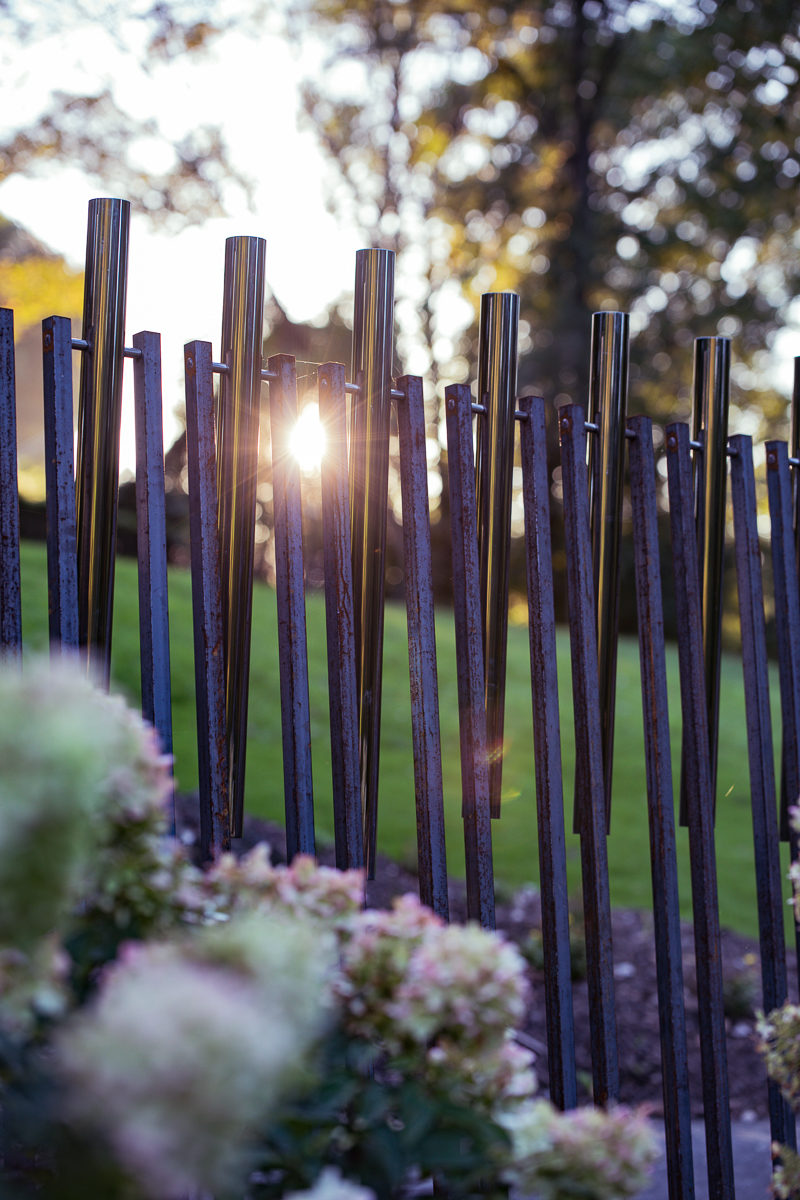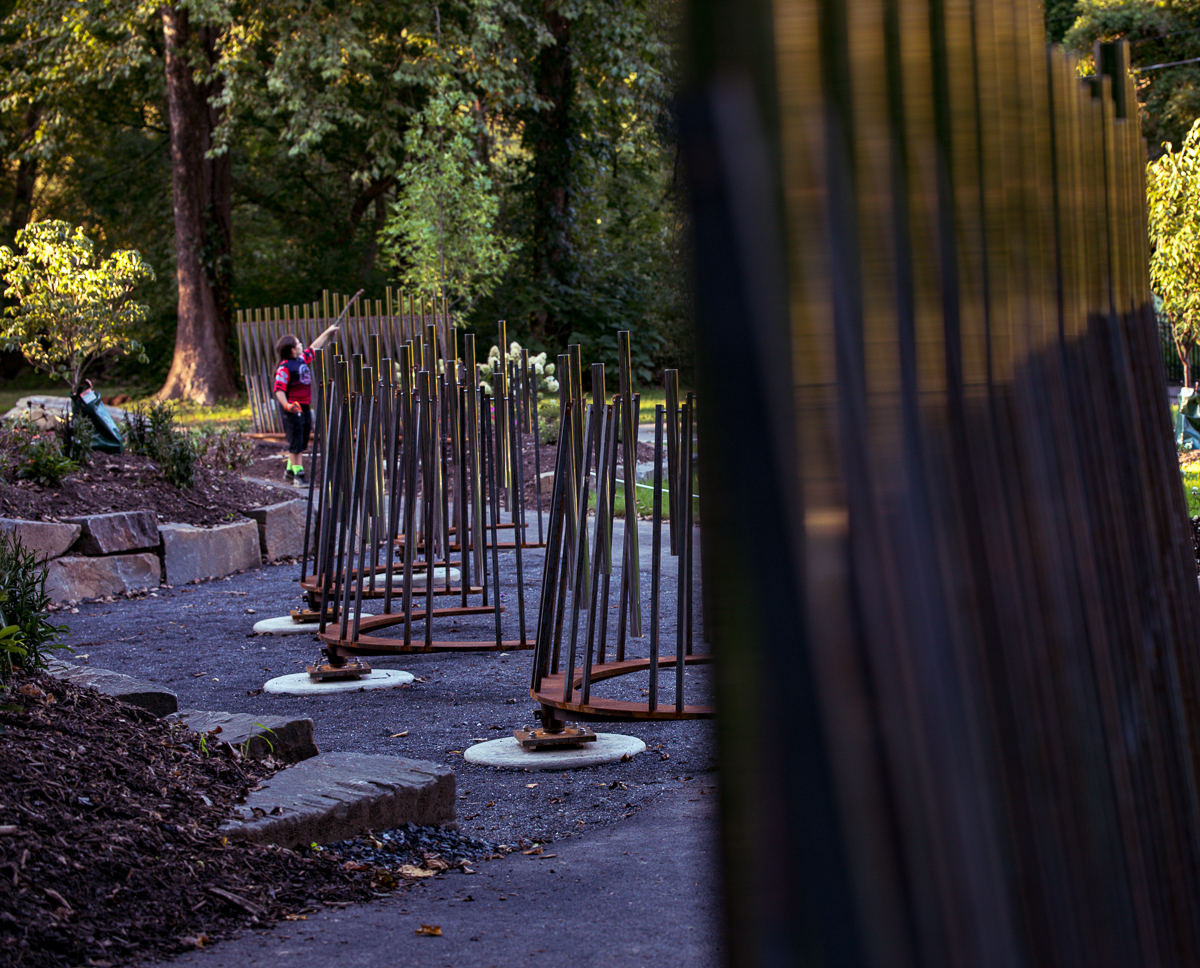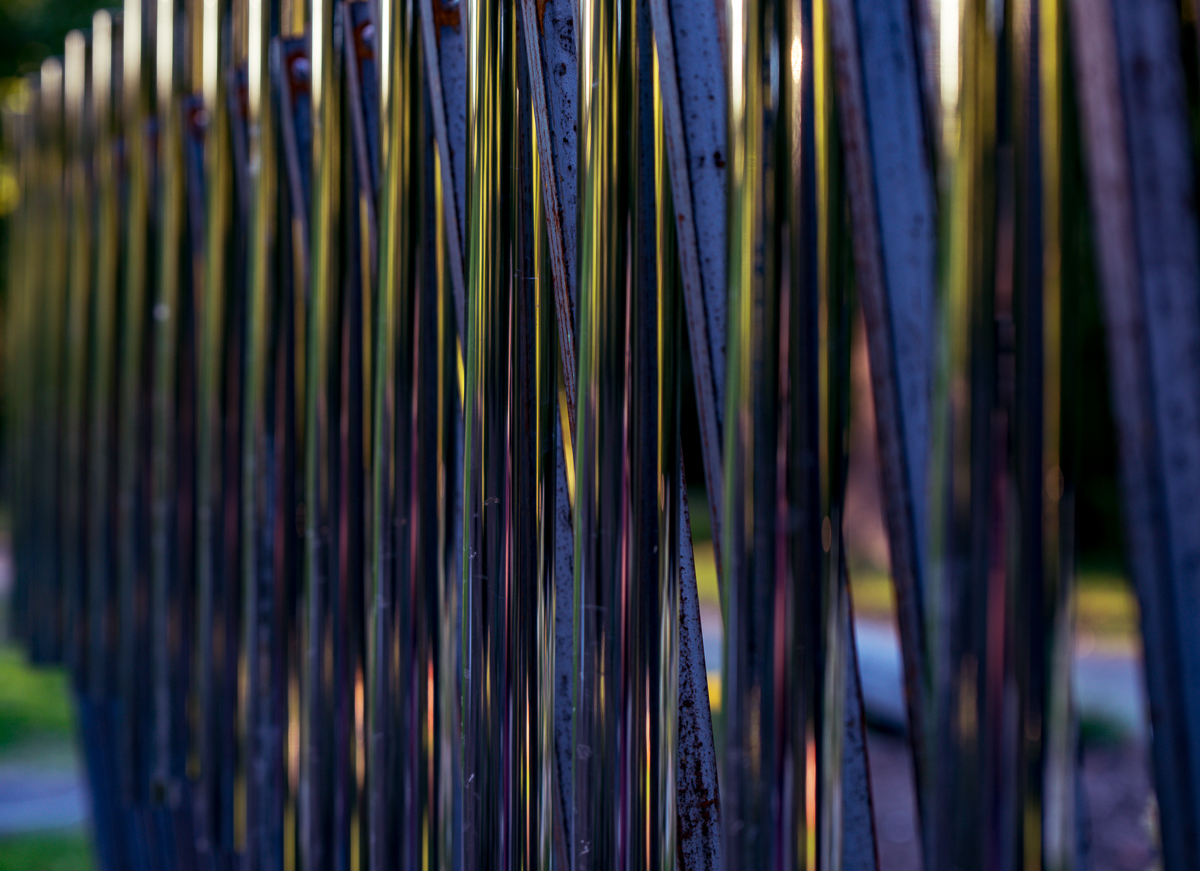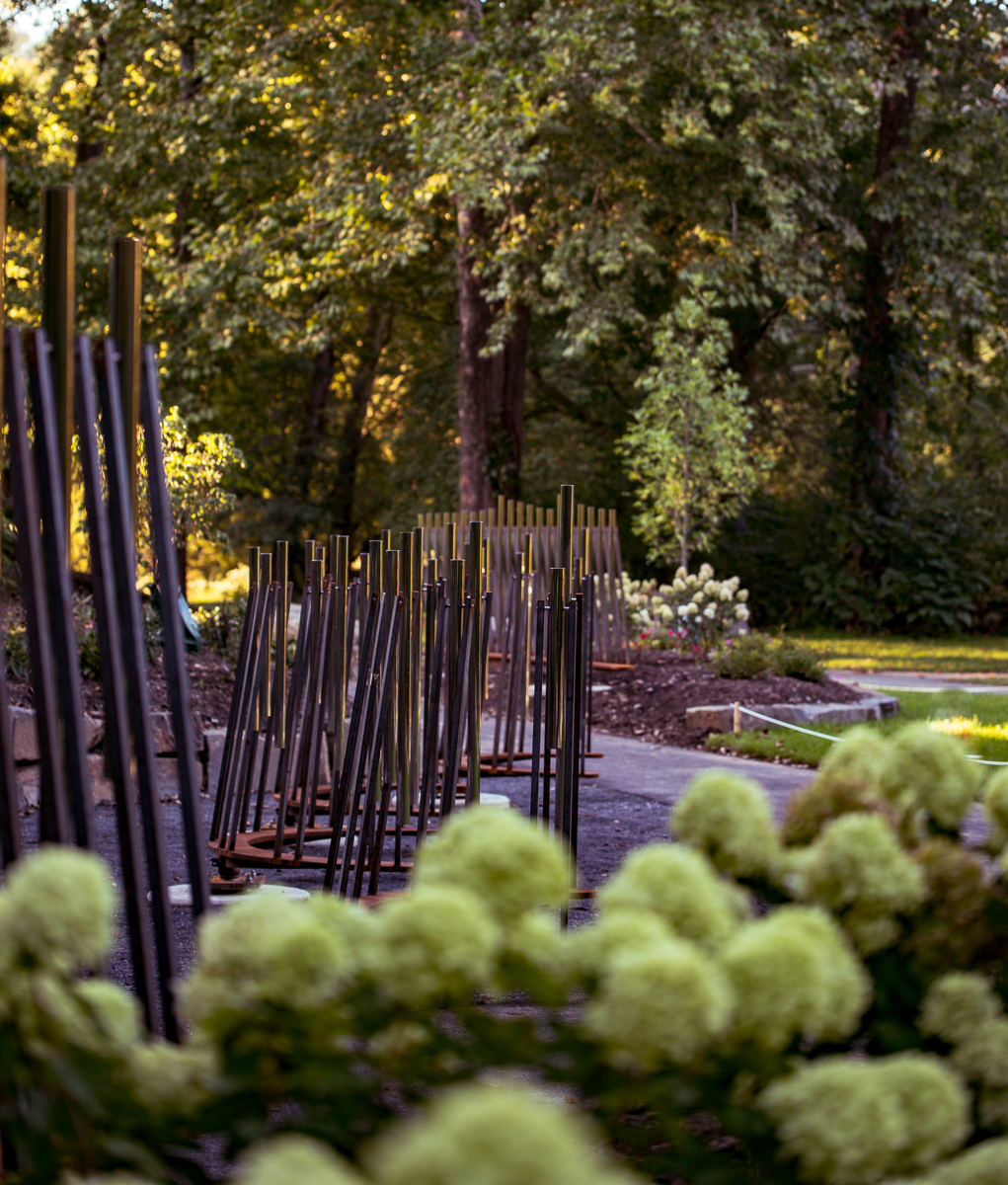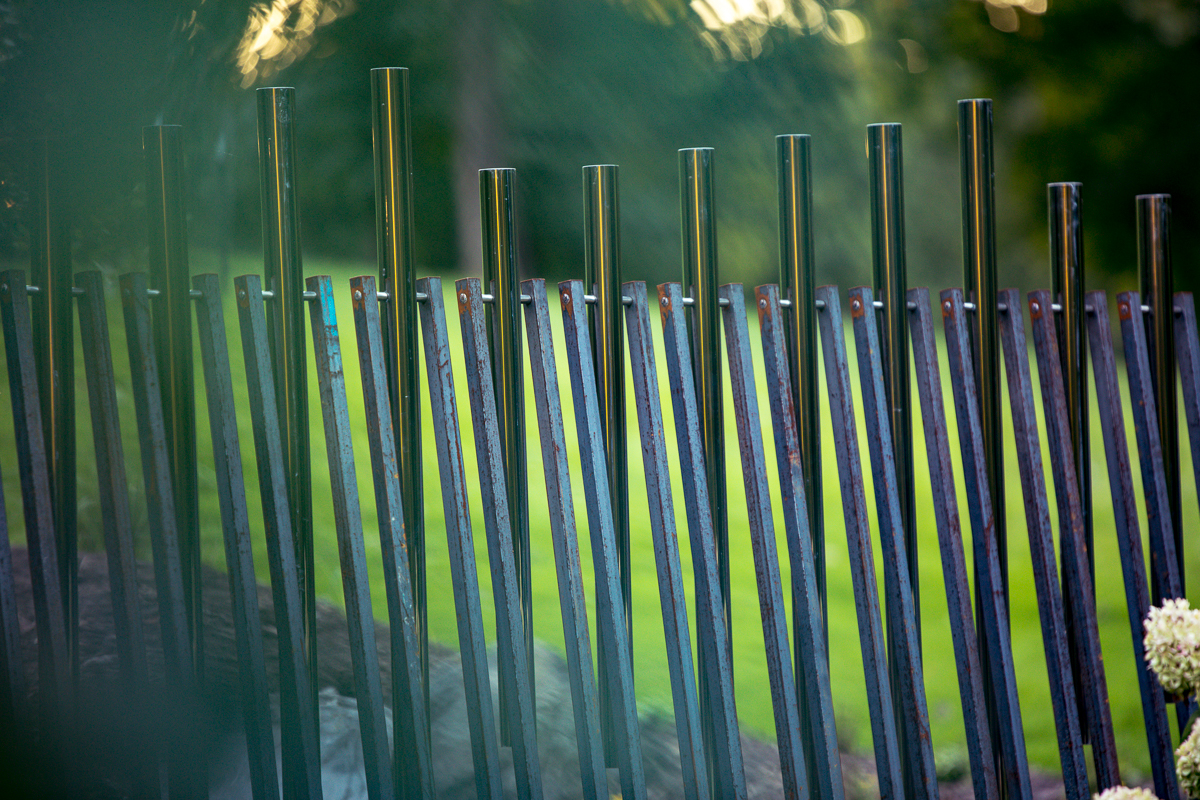Stainless steel chimes and corten steel, 2016-17
This is composed of six sets of chimes that invite visitors to discover their own compositions. One set, if played from west to east, plays Beethoven’s “Für Elise.” The other straight set plays “Für Easton,” a song in which then-Lafayette student Johnny Gossick recomposed the notes of Für Elise. The four curved “tuned” cells” are in C Major (Ionian), D (Dorian), E (Phrygian), and F (Lydian).
Musical Path was a collaboration lasting several years that included Cohen and his students; architect Joe Biondo, who designed it; Gordon Raupp, who provided landscape design; installation by Easton’s public works department; and installation funding by the city of Easton, the Pennsylvania Department of Conservation and Natural Resources, and Carpenter Technologies of Franklin, Pennsylvania.
Max Weinberg, the longtime drummer for Bruce Springsteen’s E Street Band, played the chimes at the dedication of Musical Path while in town to receive an honorary degree from Lafayette College and perform at a concert on campus (see below).
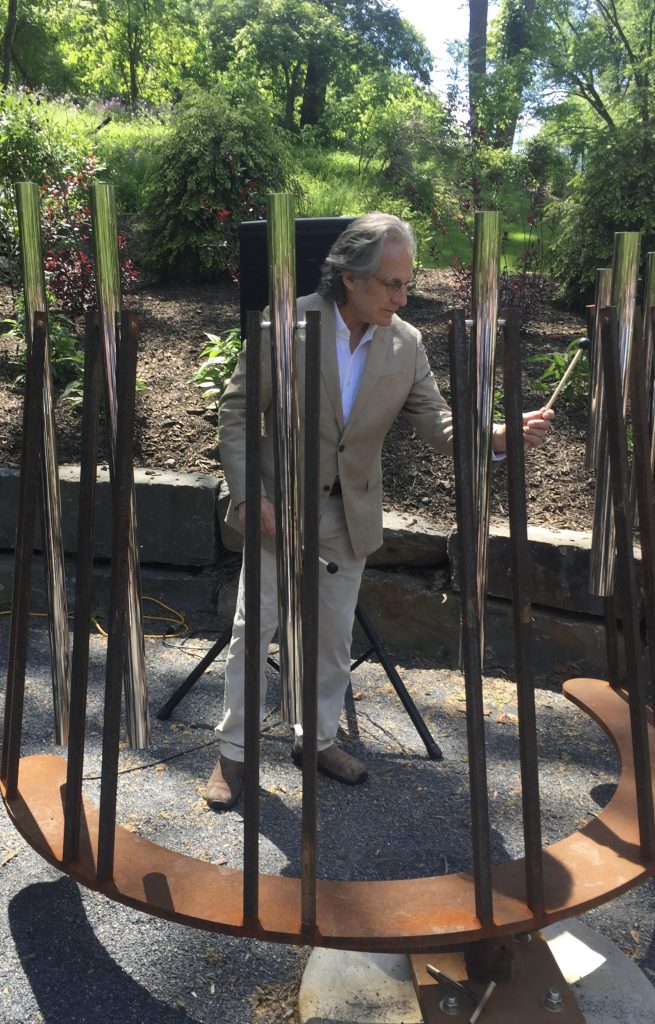
After three years of work on the Musical Playground art installation, three sets of musical chimes whose total installation cost amounted to $100,000 are now available on the Karl Stirner Arts Trail.
The vision that students and faculty members had with the installation was for children and adults alike to be able to pick up a random stick and run along the fences. One of the chimes plays Ludwig van Beethoven’s Für Elise.
Recent graduate Johnny Gossick ’18, who was an Anthropology & Sociology and Music double-major before switching to Computer Science, rearranged the notes of another set of chimes to create his own version of Für Elise and called it “Fur Easton,” according to Engineering Studies Professor Benjamin Cohen.
“We wanted a unique experience for our visitors, one that qualified as an artistic moment….but that was also playable and understandable by anyone. From a three-year-old to a 103-year-old,” said Lafayette Director of Community-Based Learning and member of the Karl Stirner Arts Trail board Jim Toia.
Toia said that the installation gives “someone that power to create music in a very simple way, it opens up doors for them that they might not have considered before.” He added that when thinking about the project, the team wanted to tune the notes of the chimes so that “it is a pleasing sound.”
In the spring of 2016, Cohen taught a course called “Sustainable Solutions” where about eight or nine students carried out the proposal from his 2015’s Engineering Studies Capstone on “a background feasibility study and basic design on what that would mean….the premise was that it was a children’s musical playground,” he said.
Because the class dealt with sustainable-based projects, the team wanted the installation to be environmentally friendly. Cohen said that the class considered “fitting into the environment using….the earth slope of the land as part of the design.”
One of the important components was preventing noise pollution and choosing environmentally friendly metals that are meant for durability and long life.
“We made it so that it has a 20- to 30-year lifespan,” Toia said. “The hope is that as people understand or experience the musical path more….then more and more people want to play it and experiment on it.”
The team consisted of students from a range of majors such as engineering, music, and art. Having students from diverse academic backgrounds is “an ideal engineering studies kind of project,” Cohen said.
When thinking about the installation, students had to negotiate between the more artistic side and the more practical.
“Having students from very different backgrounds was so helpful in engaging all these different constituents,” according to Cohen.
He added that in his experience, the more people involved in a project, the narrower the project gets “so that the final result is just a pale comparison to the original,” whereas the process of this installation was the opposite in that it got better as the group moved through different stages.
Former students involved were Shaun Gallagher ’16, Casey Gibbons ’17, Gossick, Ezra Keough ’17, Tori Polak ’16, Bethany Rack ’16, Tien Tran ’16, Tati Troxell ’16, and Chris Wickwire ’16.
According to Toia, the installation cost about $100,000, mainly from donations, grants and “people who lent their talents.” According to an email by Toia, architect Gordon Raupp from Long Valley, N.J., designed the chime landscape layout, architect Joe Biondo from Bethlehem, Pa., designed the chime construction and engineered drawings, and Carpenter Technology gave a $10,000 grant for the chime construction. The Public Works Department includes Director of Easton Public Works Dave Hopkins and Foreman of Easton Parks System Justin Weis. Though the installation is currently in a good state, “there is a little tweaking left to do,” Toia said. “There are a couple of chimes that aren’t quite properly tuned, so we’re going to have to go back and fix those.”
He added that the committee is currently trying to select “the proper mallets and [figure out] how we’ll attach them so they are permanently available.”
Music professor and department head Larry Stockton is planning on using the chime installation for the school’s Percussion Ensemble to play in the near future.

